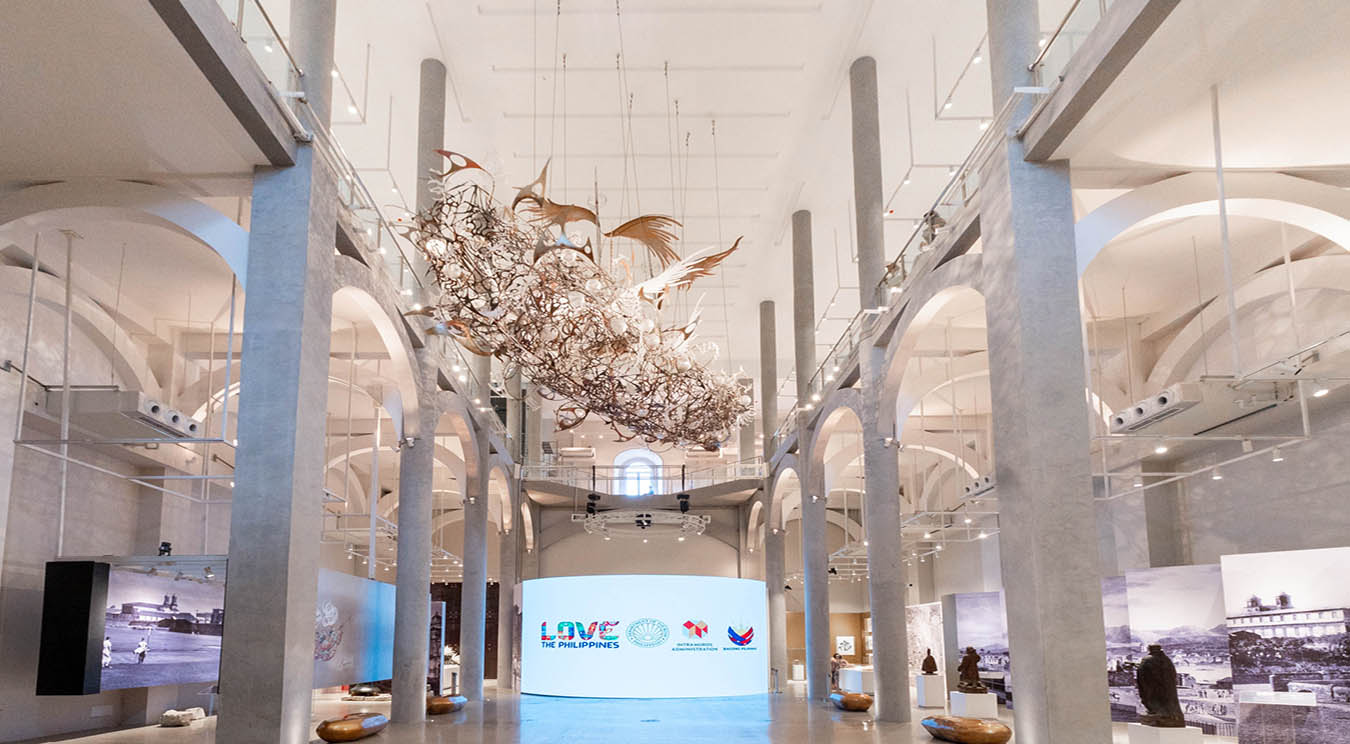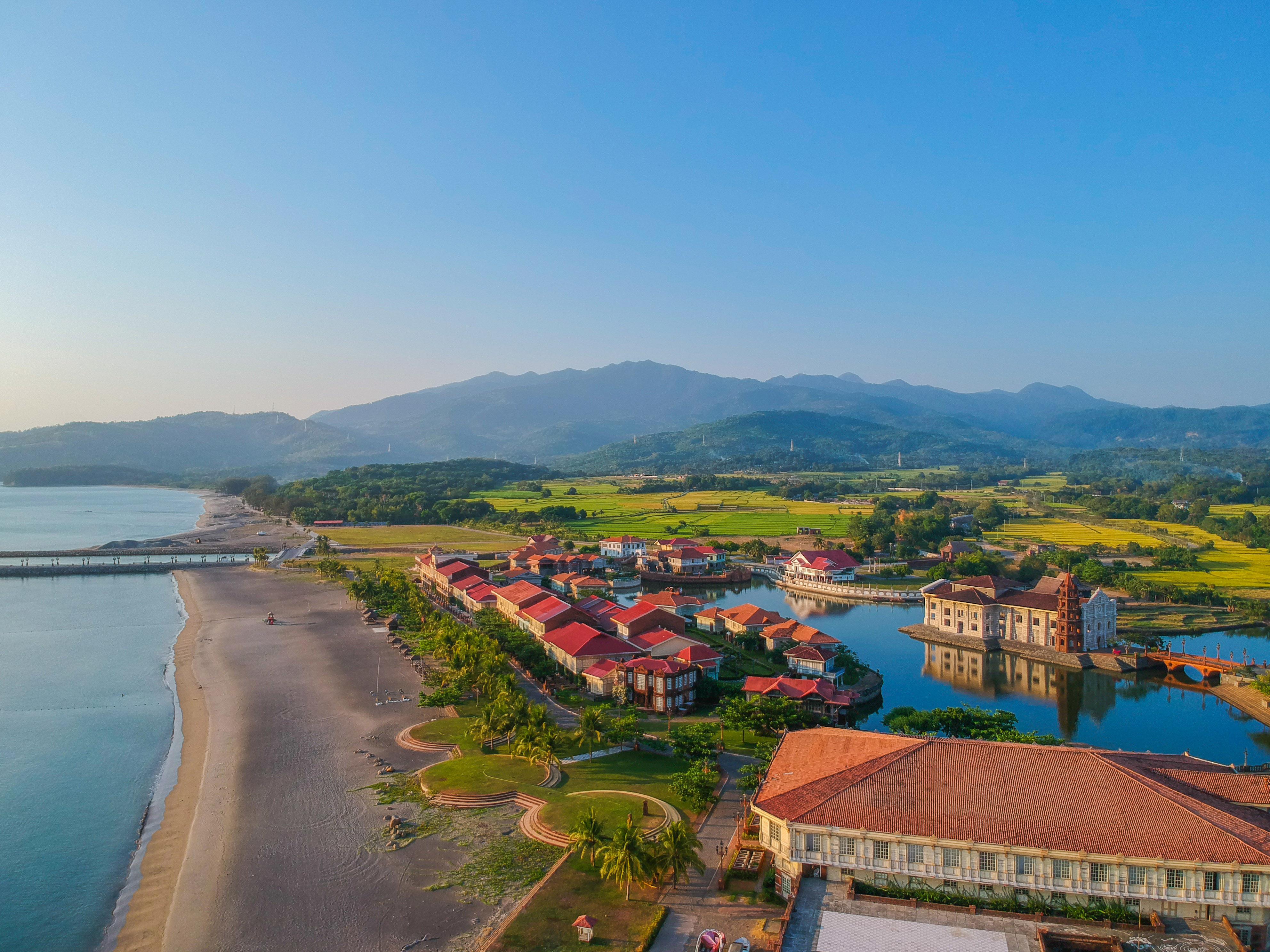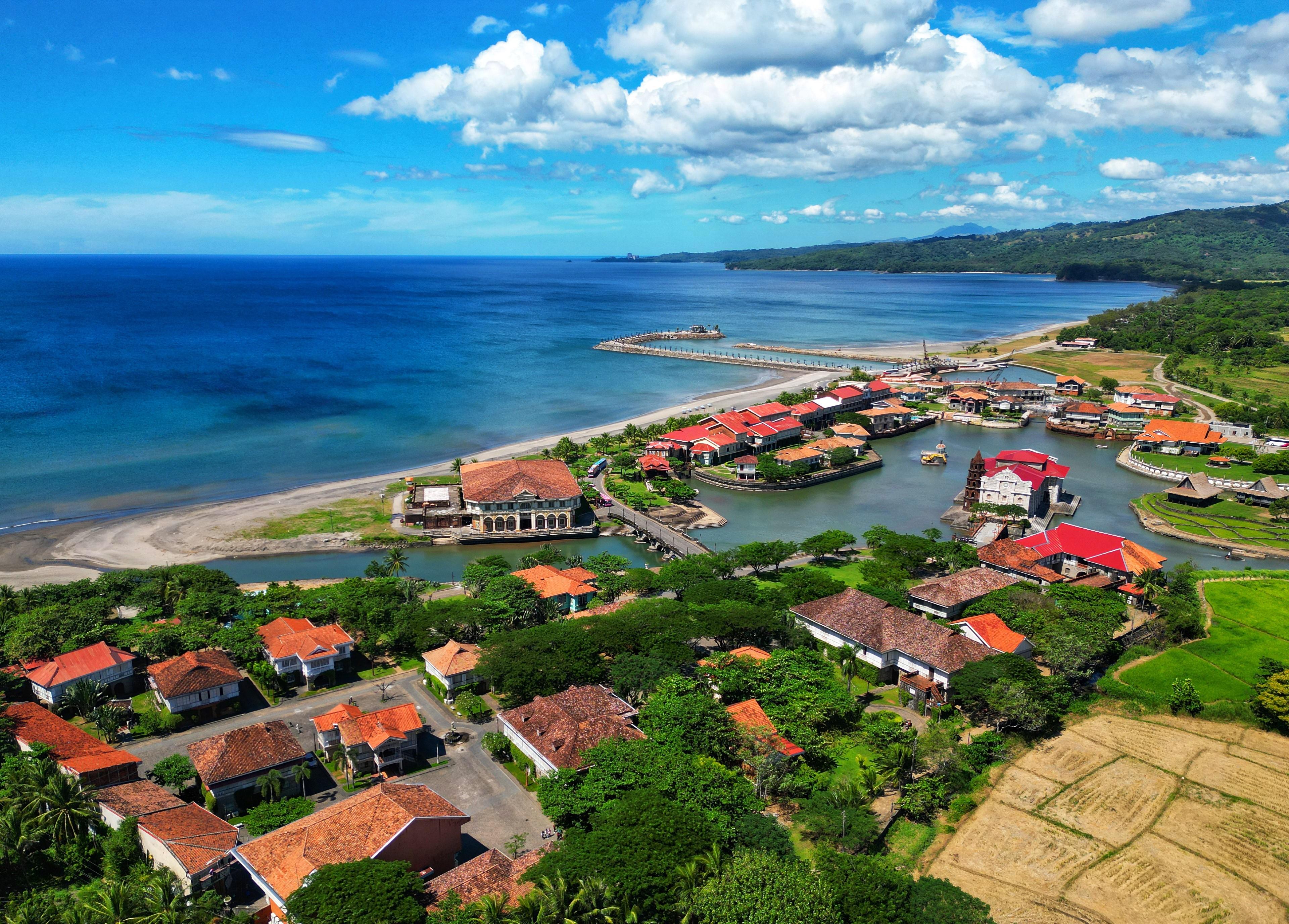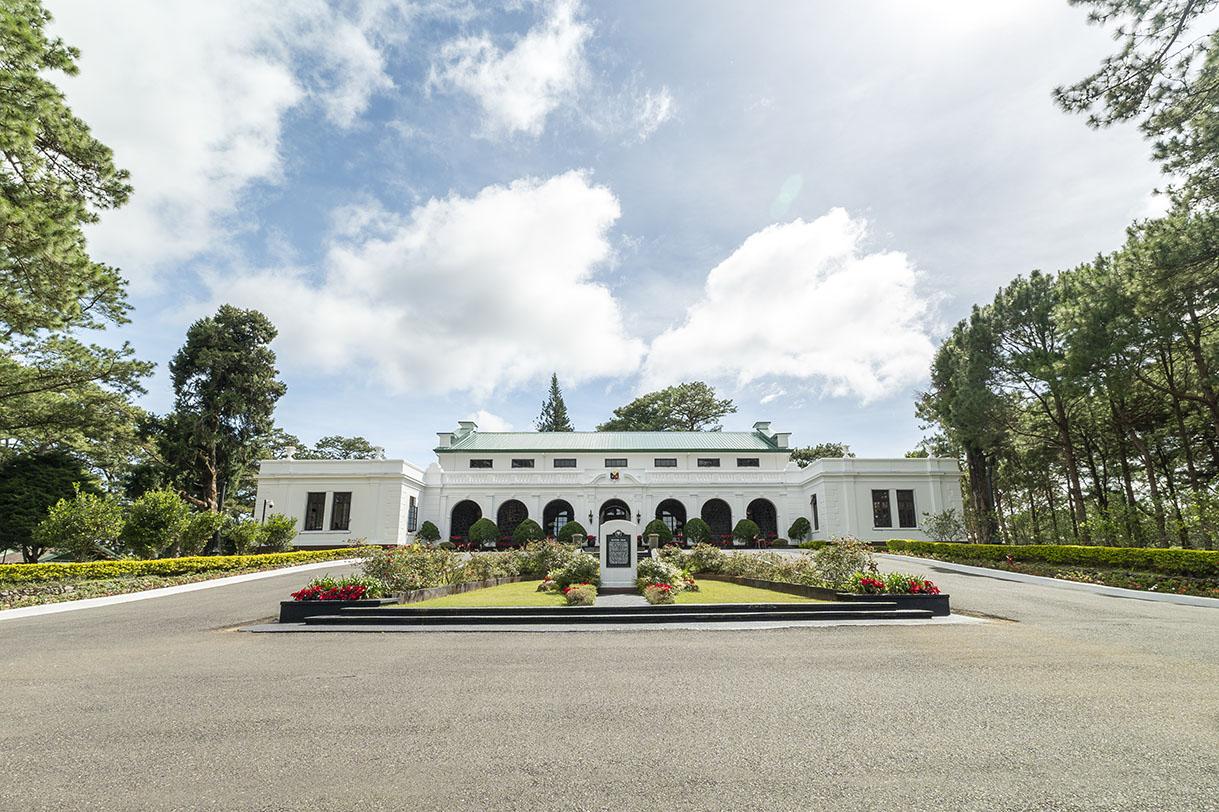Known for its rich history and its engaging tourist destinations, Manila’s Walled City, or Intramuros, is a home to Spanish-era landmarks. The Fort Santiago with a huge stone gate and a shrine to national hero Jose Rizal. The ornate Manila Cathedral houses bronze carvings and stained glass windows, while the San Agustin Church museum has religious artwork and statues. Spanish colonial furniture and art fill Casa Manila museum, and a horse-drawn carriages ply the area’s cobblestone streets.
And the historic San Ignacio Church along Arzobispo Street. Named in honor of St. Ignatius of Loyola, the Italian baroque architectural-styled church was designed for the Jesuits by architect Félix Roxas Sr. and was completed in 1899. It was known as the “Golden Dream” but was destroyed during World War II. Its interiors, embellished with carvings, had been designed by Isabelo Tampinco.

The church building has been reconstructed along with its adjoining Casa Misión Convent. It eventually became the home of the Centro de Turismo Intramuros while the mission house has transformed into the Museo Intramuros.
The captivating Centro de Turismo Intramuros, or simply Centro de Turismo, showcases exhibits on Intramuros’ rich stories, blending history with modern technology or futuristic set-up. It gives a visitor an understanding of the cultural and spiritual roots of the Philippines.
The ground floor of the Centro de Turismo highlights the “evolution and growth of the Walled City, Intramuros, from the pre-colonial to the contemporary period. The foyer of the reconstructed building introduces the origins of San Ignacio Church and the role of the Jesuits in Intramuros. A 360 degree cylindrical drum summarizes the exhibition narrative through panoramic views and peopling settlement, elaborated in the central hall that traces the growth of the walled city from the precolonial period, the dynamic Spanish city, the growth of the arabales, the institutionalization of the government, the redefinition of society, the reconstruction and rise of the new Intramuros,” says Dr. Eric B. Zerrudo, executive director of the National Commission for Culture and the Arts.
This narrative, he says, explained through texts, images, excavated and collected objects from the Intramuros Administration. Of interest is the rare and graphic 1717 map, culled from the British Library which illustrates the British military attack of 1762. Another highlight is the retablo of the of the Recollect church of Cebu mounted in its entirety and scale.

The adjacent building features the Intramuros Administration (IA) collection narrated through the exhibition “Imagenes Indigenes: The Indio Response to the Evangelization”. This highlights the waves of “religious orders, gleaned through the pageantry of images, saints and altars that evangelized the whole archipelago. Breathtaking is the silver collection of religious altars, vestments, vessels and reliquaries that impresses the glory, wealth and power of the Spanish religious movement.”

Certainly, Centro de Turismo is now a visitors’ hub and museum located inside the reconstructed San Ignacio Church. It was launched on June 9, 2024 by First Lady Louise Araneta-Marcos, together with other government officials, and was officially opened to the public on June 12, 2024, during the Philippine Independence Day celebration.
Furthermore, it features 8,000 artifacts, mostly ecclesiastical collections from the adjacent Museo Intramuros which has also been refreshed with new galleries of breathtaking collections of religious art and artifacts. Its revamp gives local and foreign tourists a deeper understanding of the cultural and spiritual roots of the Philippines.
“The Centro de Turismo Intramuros and Museo Intramuros provide a wholistic understanding of the place both in content and context. For the visitors to appreciate the walls, the experience should include the grid system of colonial streets, the churches and cafes, the ruins and gardens. The Centro impresses the history of the place and the lifeways of people during the Spanish colonial period through objects, stories, illustrations and moving images,” explains Dr. Zerrudo.
 This is the strength of the Centro Turismo de Intramuros and Museo Intramuros since both narratives complement to create a wholistic picture of the place at a particular period in history.
This is the strength of the Centro Turismo de Intramuros and Museo Intramuros since both narratives complement to create a wholistic picture of the place at a particular period in history.
He adds, “The whole Intramuros story is relived through a huge cylindrical LED drum that regularly shows the Intramuros history and programs of Intramuros Administration.”
The contemporary artwork of Leroy Neo entitled the “Galleon Psychopomp” resonates the colonial Galleon ship, the trading vessel from Manila to Acapulco that traversed the Pacific for 250 years, strapped on air at the center of the hall. “This indeed alludes to the galleon but also mimics the journeys of our minds towards curiosity and discovery.”
The collections of the Centro Turismo are “mostly secular objects representative of the colonial era. The narrative is segmented according to significant eras of development. Precolonial era is represented by Manila ware, earthenware pots that are exquisitely fired with geometric and wave patterns. The Spanish City era exhibits the canons, cash boxes, mantones de Manila and the rare British map. The rise of the arrabales era features the objects of residents such as cloth ornaments, metal pail to get water from the cistern. The institutions’ era shows imported china, the books and documents of religious orders. The war era surfaces the excavated guns, bomb shrapnel and lastly, the Intramuros Administration era illustrates the archival pictures of the reconstruction of the walls in the 1970s.”
Museo Intramuros, on the other hand, is segmented into 12 galleries following a thematic narrative. The narratives are expressed through actual objects, pictures, paintings religious images, light boxes, and house altar tableaus.
“The cultural expansions are expressed in the Centro Turismo through the rise of the Intramuros as the inner City of Manila. At the same time, the rise of the towns and outside the walled precinct. This should consider the rise of the parian sector in Paco, the rise of Binondo for Chinese traders, the rise of Quiapo and San Miguel Districts for residents, educational institutions and even Malacanang,” points out Dr. Zerrudo with a glint in his eyes.

The religious life is graphically captured by the evolving narratives of the Museo Intramuros. In particular, the story takes off “from the journey of the Catholic faith from Europe to Manila. Other segments are the dedication of the archipelago to the Immaculate Conception, predating the 19th century Pontifical dogma by a hundred years. Also the wave of religious orders that converted the people in the archipelago. The transformation and interpretation of religious images from primitive to Chinese influence to classical art forms. The silver collection that flaunts the wealth and richness of the church. The popularity of church rituals through procession in the streets. The assimilation of the church practice into household space, gleaned from the altars of the rich and the poor.”
Regular operating hours of both museums are from 9 AM to 6 PM, Tuesdays to Sundays.
Certainly, there is a bright prospect for Philippine museums despite the fast changing technological, hyper-millennial developments.
“Museums, alternative spaces, cultural centers are very important venues for discussion and discourse, interpretation and education, silence and contemplation. It can be conjured by various mediums- objects, sensories, images, that would provide an experience of past and valuing of the present. Whether one uses the traditional approach to museum exhibition or the latest technological gadget to simulate museum, there has to be a story, a message and a medium to transform the visitor to a better state of mind and action, to a better person,” concludes Dr. Zerrudo, who had been trained as a development economist but found himself working in a museum because he always enjoys the culture, arts, history and heritage.






